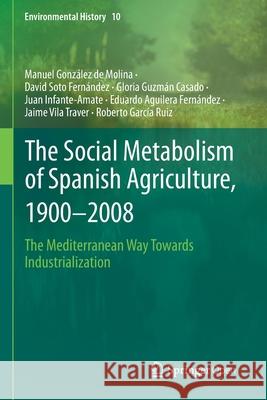The Social Metabolism of Spanish Agriculture, 1900-2008: The Mediterranean Way Towards Industrialization » książka
topmenu
The Social Metabolism of Spanish Agriculture, 1900-2008: The Mediterranean Way Towards Industrialization
ISBN-13: 9783030209025 / Angielski / Miękka / 2020 / 281 str.
The Social Metabolism of Spanish Agriculture, 1900-2008: The Mediterranean Way Towards Industrialization
ISBN-13: 9783030209025 / Angielski / Miękka / 2020 / 281 str.
cena 201,72
(netto: 192,11 VAT: 5%)
Najniższa cena z 30 dni: 192,74
(netto: 192,11 VAT: 5%)
Najniższa cena z 30 dni: 192,74
Termin realizacji zamówienia:
ok. 22 dni roboczych.
ok. 22 dni roboczych.
Darmowa dostawa!
Kategorie:
Kategorie BISAC:
Wydawca:
Springer
Język:
Angielski
ISBN-13:
9783030209025
Rok wydania:
2020
Wydanie:
2020
Ilość stron:
281
Waga:
0.42 kg
Wymiary:
23.39 x 15.6 x 1.63
Oprawa:
Miękka
Wolumenów:
01
Dodatkowe informacje:
Bibliografia
Wydanie ilustrowane
Wydanie ilustrowane











